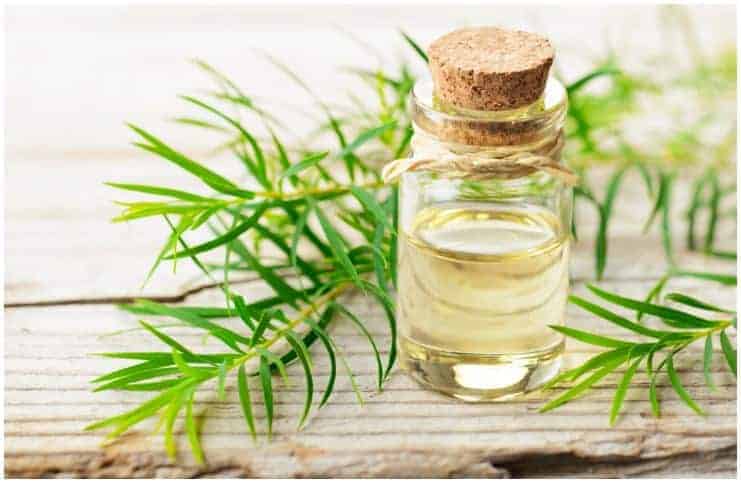Manuka Oil
It is obtained by harvesting the leaves from the Manuka tree (botanical name – Leptospermum Scoparium) and extracting the oil through steam distillation.
Benefits
Minimizing The Risk Of A Legionella Infection
The active ingredients in this essential oil are a class of chemicals with the scientific term of triketones, and one of the most important uses of this oil is to combat Legionella bacteria. This type of bacterium is found in wet environments or damp, ranging from damp spa baths to gardening soils. Also, it is used in air conditioning systems throughout the US.
Legionnaires’ disease is caused by this bacterium with signs and symptoms including – fever, muscle aches, chills, fatigue, tiredness, headaches, a cough, and reduced appetite.
Anti-inflammatory Effects
Inflammation is the human body’s reaction to outside threats, such as – infection, stress, or toxic chemicals. The real problem is when chronic inflammation sets in and the repair process never occurs, and the elimination of the irritant or pathogen never takes place.
This can happen for a few reasons, like:
- the immune system starts to attack a healthy tissue;
- we keep feeding the body foods which cause inflammation;
- too much physical exercise combined with a diet low in antioxidants;
- the onslaught of pathogens doesn’t stop;
- the body doesn’t have the right raw materials to repair itself.
The anti-inflammatory properties of this oil can help relieve a range of muscular pains and aches plus, inflammatory conditions, like – rheumatism.
Strong Antibacterial Properties
According to studies, this oil is effective against Staphylococcus that can actually develop in the respiratory tract or on the skin. There are more than 30 types, but Staphylococcus aureus causes most staph infections, including:
- bacteremia (blood poisoning);
- toxic shock syndrome (symptoms include – rash, fever, low blood pressure, and skin peeling);
- food poisoning;
- pneumonia;
- skin infections.
This oil reduces bacterial growth in the human body, including those that cause infections in the large intestine, urinary system, and respiratory tracts.
In addition to its effectiveness against Staphylococcus, this oil can eliminate a variety of bacteria and fungi which thrive on the toes and feet and cause athlete’s foot, also known as tinea pedis, a fungal infection that affects the upper layer of the skin of the foot, particularly when it is moist, warm, and irritated.
Heals Scars
These remedies have been used for millennia to reduce the appearance of unwanted scars on the body. This essential oil works on a cellular level to help stimulate healthy new skin cell growth and repair damage to the skin.
Moreover, it helps to regenerate skin cells that can layer over the damaged scar tissue. This, over time, will create a new healthy overall appearance of the skin.
Warnings
If you are pregnant or breastfeeding a baby, consult your doctor prior to use since there are no studies regarding its safe use during this time. Keep away from mucous membranes and eyes. For external use only.
Tea Tree Oil
It is produced from the leaves of a tree native to New South Wales and Queensland, Australia, with the scientific name Melaleuca alternifolia.
Many studies have demonstrated the anti-inflammatory, antifungal, antiseptic, antiviral, and antibacterial properties of this powerful essential oil.
Most likely its potent properties are due to its main constituents which include – beta pinene, alpha-pinene, myrcene, sabinene, alpha-terpinene, alpha phellandrene, cineole, limonene, para-cymene, gamma terpinene, terpinolene, terpineol, linalool, and alpha-terpineol.
Benefits
Asthma
Approximately 24 million people in the US have asthma. This condition costs the United States more than $60 billion in lost work and school days, medical costs, and early deaths every year. When a few drops of this essential oil are added to a humidifier, it can relieve asthma and other pulmonary conditions.
Acne
Acne can affect anyone regardless of race, age, or sex and is the most frequent skin condition in the US. Acne usually causes significant psychological and physical problems, like – poor self-image, permanent scarring, anxiety, and depression.
When this essential oil is used in combination with glycolic acid, it helps destroy the harmful bacteria which can cause acne flare-ups. In addition, it doesn’t inflame the skin and can be used for a variety of skin conditions.
Athlete’s Foot
About 15 to 25 percent of all humans are likely to have tinea pedis at one time during their lives. This bacterial infection usually affects the feet and toes, but it can spread to other parts of the body as well.
The fungus can cause the skin to crack and redden. Also, the affected areas flake and may become quite itchy.
A cream containing this essential oil can be applied twice per day for 30 days as it relieves the symptoms of tinea pedis.
Side Effects And Warnings
This oil is only to be used as a topical remedy and should never be ingested.
Manuka Oil vs Tea Tree Oil – Which Has More Potent Antibacterial Properties?
Both these essential oils are related and share some similar properties. However, scientists have found manuka essential oil to be up to 33 times more potent (regarding its antibacterial properties) than tea tree oil.
Images credit – Shutterstock
READ THIS NEXT: Tinea Versicolor vs Vitiligo – Causes
